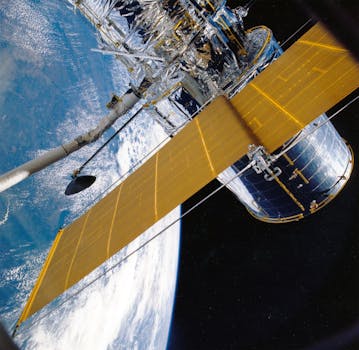From Geostationary to Low Earth Orbit: The Evolution of Satellite Telecommunications in 2023
The satellite telecommunications industry has undergone significant transformations in recent years, with a shift from geostationary to low Earth orbit satellites. This article explores the evolution of satellite telecommunications in 2023, highlighting key trends, technologies, and innovations.

From Geostationary to Low Earth Orbit: The Evolution of Satellite Telecommunications in 2023
From Geostationary to Low Earth Orbit: The Evolution of Satellite Telecommunications in 2023 is a rapidly changing field, with advancements in technology and shifting market demands driving innovation and growth. The satellite telecommunications industry has witnessed significant transformations in recent years, with a notable shift from geostationary to low Earth orbit satellites. This shift has been driven by the need for faster, more reliable, and cost-effective communication services.
The geostationary orbit, which is approximately 36,000 kilometers above the equator, has been the traditional domain of satellite telecommunications. Geostationary satellites have been used for a wide range of applications, including television broadcasting, telecommunications, and weather forecasting. However, these satellites have several limitations, including high latency, limited bandwidth, and high operating costs.
The Rise of Low Earth Orbit Satellites

In recent years, there has been a significant shift towards low Earth orbit (LEO) satellites, which operate at an altitude of around 160 to 2,000 kilometers. LEO satellites offer several advantages over geostationary satellites, including lower latency, higher bandwidth, and lower operating costs. LEO satellites are also more suitable for real-time applications, such as video conferencing, online gaming, and remote sensing.
One of the key drivers of the shift towards LEO satellites is the development of new satellite constellations, such as OneWeb, Starlink, and Amazon’s Kuiper Systems. These constellations consist of hundreds or thousands of small satellites that work together to provide global coverage and high-speed connectivity. The use of LEO satellites also enables the provision of services such as satellite-based internet, which can reach remote and underserved areas.
Technological Advancements and Innovations

The evolution of satellite telecommunications in 2023 has been driven by several technological advancements and innovations. One of the key developments is the use of advanced materials and manufacturing techniques, which have enabled the production of smaller, lighter, and more efficient satellites. The use of 3D printing, for example, has allowed for the creation of complex satellite structures and components.
Another significant development is the use of phased array antennas, which enable satellites to steer and shape their beams electronically. This technology allows for more efficient use of satellite bandwidth and enables the provision of higher-speed services. The use of artificial intelligence and machine learning algorithms also enables satellites to optimize their performance and adapt to changing conditions.
Market Trends and Future Outlook

The satellite telecommunications market is expected to continue growing in the coming years, driven by increasing demand for high-speed connectivity and the need for resilient and secure communication services. The use of LEO satellites and satellite constellations is expected to play a key role in this growth, enabling the provision of services such as satellite-based internet and IoT connectivity.
The evolution of satellite telecommunications in 2023 is also expected to be driven by the development of new applications and services, such as satellite-based Earth observation and navigation. The use of satellites for environmental monitoring, disaster response, and search and rescue operations is also expected to increase, driven by the need for more accurate and timely data.
See more:






